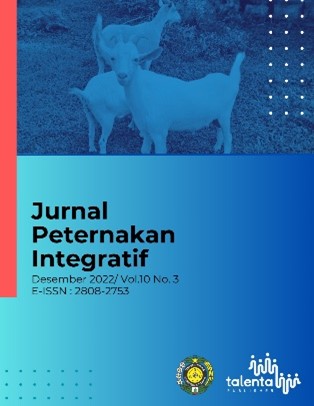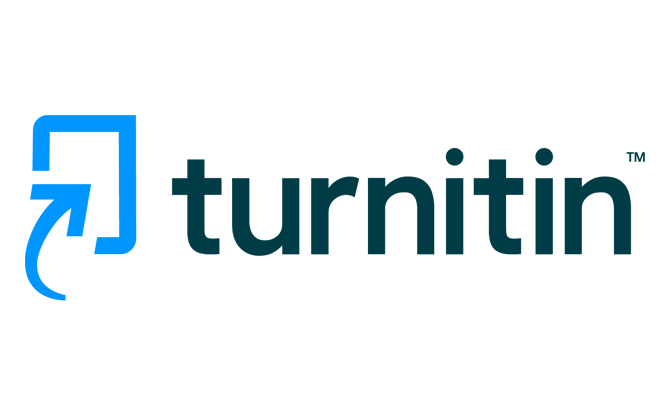Bioactivator Based On Organic Waste for Maggot Media
DOI:
https://doi.org/10.32734/jpi.v10i3.9620Keywords:
fermentation, local microorganisms, microbial population, organic waste, total acidAbstract
Bioactivator is needed for making maggot growth media. This study aims to determine the quality of bioactivator based on various organic waste. The research design used was a 4x3 factorial randomized design (CRD) with three replications. The factor I was various organic wastes (D1 = vegetable waste, D2 = fruit waste, D3 = food processing waste, D4 ​​= mixed waste and Factor II was length of  fermentation day (L1 = 7 days, L2 = 14 days, L4 = 21 days), the variables observed were pH, colour, aroma, microbial population, and total acid. pH of media was in the range of 5.4 - 6.7. There was no difference in colour and aroma due to each treatment. Population of microbial in the range of  11.36 x 105 - 2.18 x 106, 14 days fermentation caused highest microbial population. Total acid range of 2.21 - 3.15. In conclusion bioactivator of vegetable, fruit, food processing and mixed waste almost has the same characteristics on pH, colour, aroma and total acid. However, 14 days of fermentation produced better bioactivator. This study will be continued with the application of bioactivators as maggot media growth.
Downloads
Downloads
Published
Issue
Section
License
Copyright (c) 2022 Jurnal Peternakan Integratif

This work is licensed under a Creative Commons Attribution-ShareAlike 4.0 International License.
The Authors submitting a manuscript do so on the understanding that if accepted for publication, copyright of the article shall be assigned to Jurnal Peternakan Integratif as well as TALENTA Publisher Universitas Sumatera Utara as the publisher of the journal.
Copyright encompasses exclusive rights to reproduce and deliver the article in all forms and media. The reproduction of any part of this journal, its storage in databases and its transmission by any form or media, will be allowed only with written permission from Jurnal Peternakan Integratif.
The Copyright Transfer Form can be downloaded here.
The copyright form should be signed originally and sent to the Editorial Office in the form of original mail or scanned document.















